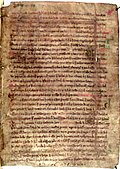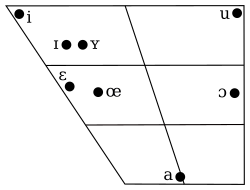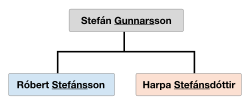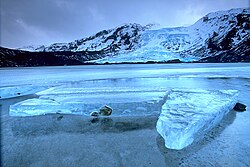Icelandic language
Icelandic is the language spoken by the people of Iceland.
| Icelandic | ||||
|---|---|---|---|---|
| íslenska | ||||
| Pronunciation | [is(t)lɛnska] | |||
| Native to | ||||
| Native speakers | 320,000 (2011)[1] | |||
| Language family | Indo-European
| |||
| Writing system | Latin (Icelandic alphabet) Icelandic Braille | |||
| Official status | ||||
| Official language in | ||||
| Recognised minority language in | ||||
| Regulated by | Árni Magnússon Institute for Icelandic Studies in an advisory capacity | |||
| Language codes | ||||
| ISO 639-1 | is | |||
| ISO 639-2 | ice (B) isl (T) | |||
| ISO 639-3 | isl | |||
| Linguasphere | 52-AAA-aa | |||
| ||||
It is a Germanic language. It comes from the Old Norse language, the language spoken by the Vikings. Because Iceland is far away from other countries, the language has not changed much. Icelandic people can still read words from hundreds of years ago.
Icelandic uses four characters that are not used in English: þ (thorn), (like 'th' in thin), ð (edh), (like 'th' in this), æ (pronounced like I) and ö (pronounced like the French U). It can also be said that ð is a "softer" version of þ.
Some linguists say there are only two Nordic languages, Eastern-Nordic and Western-Nordic, which includes Icelandic and Faroese because of their similarity.
Icelandic is also one of the most difficult languages to learn.
Icelandic Language Media
A page from the Landnámabók, an early Icelandic manuscript
Eyjafjallajökull, one of the smaller ice caps of Iceland, situated to the north of Skógar and to the west of Mýrdalsjökull, is Icelandic for "glacier of Eyjafjöll", in turn "glacier of island mountains".
References
| This language has its own Wikipedia project. See the Icelandic language edition. |




